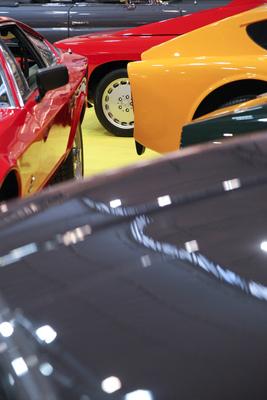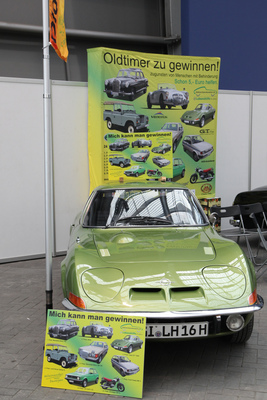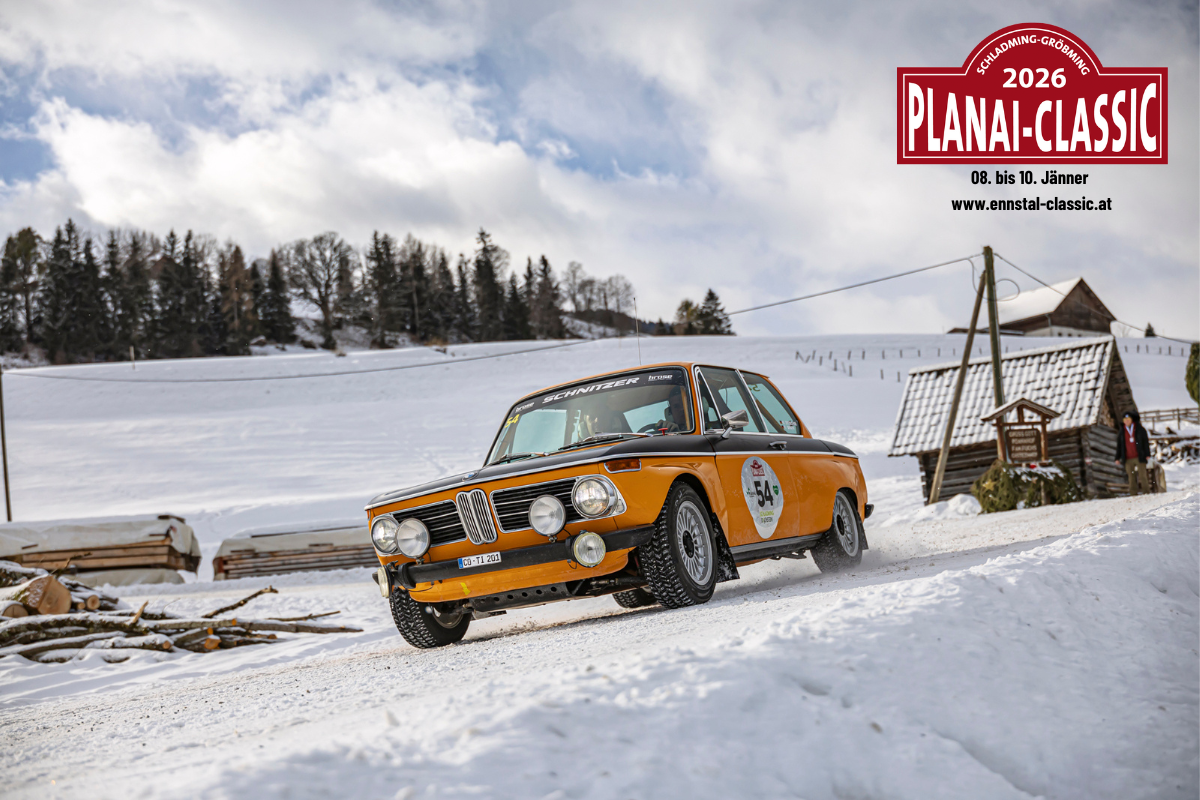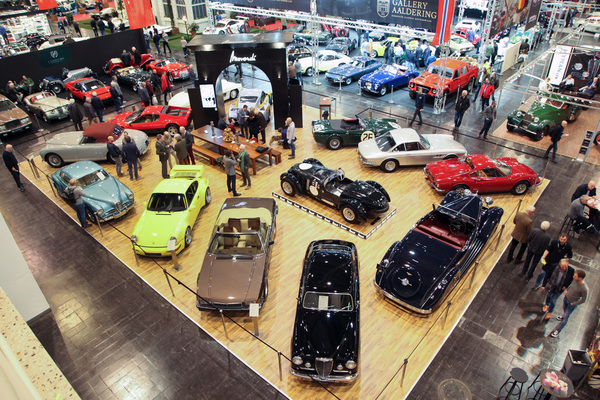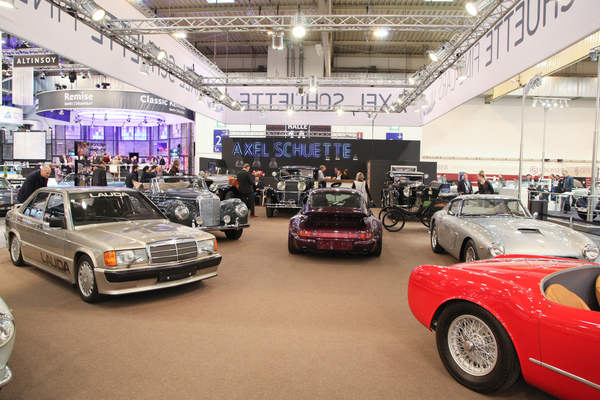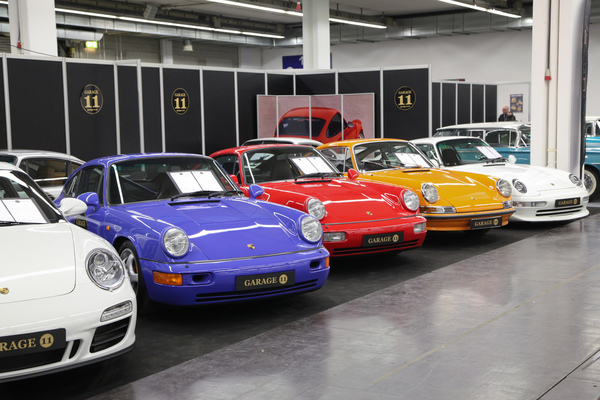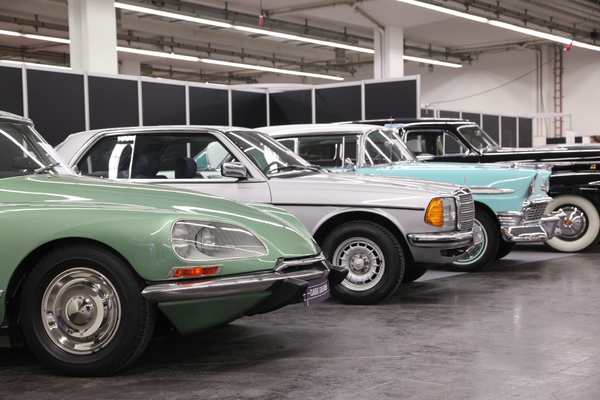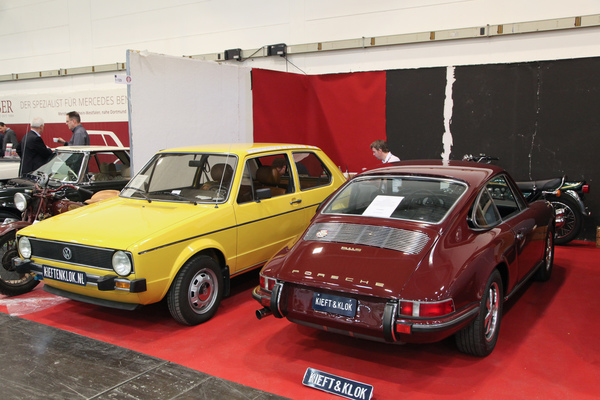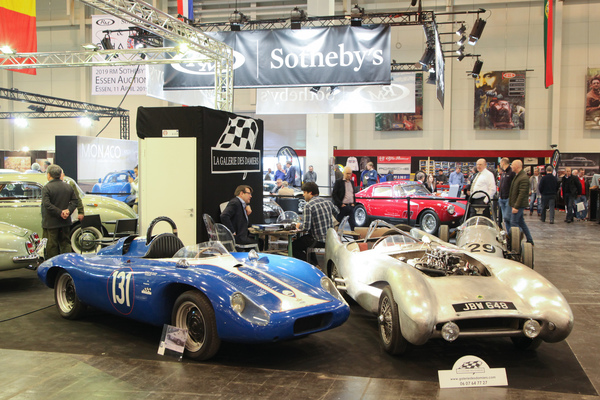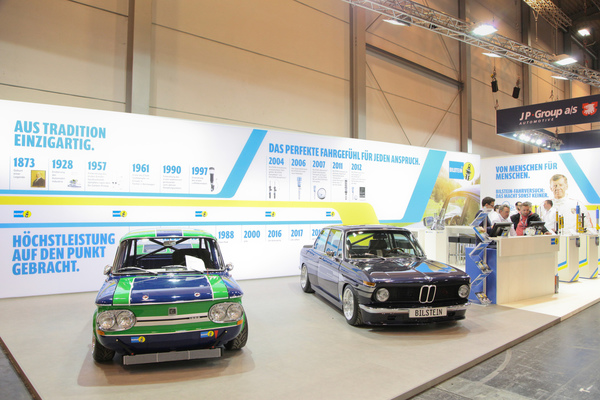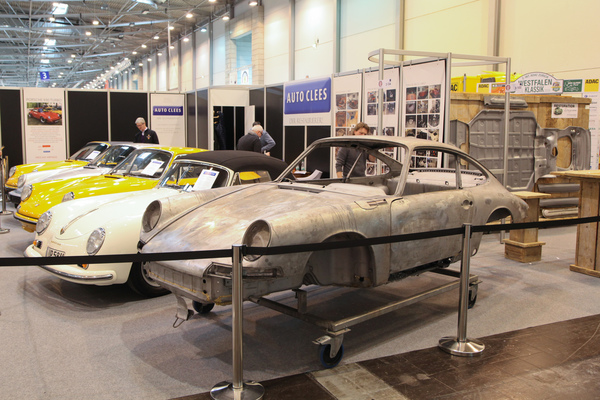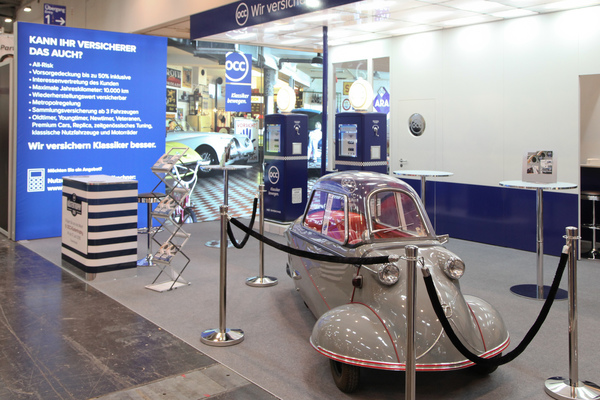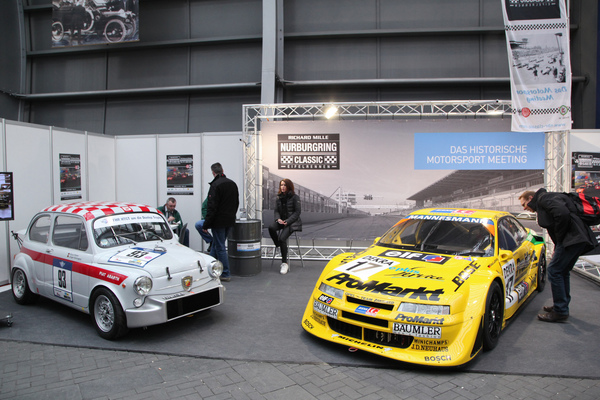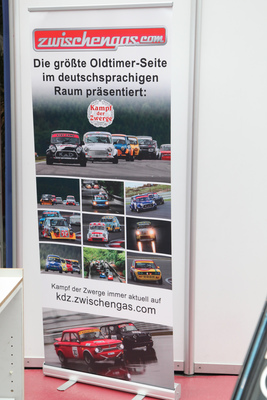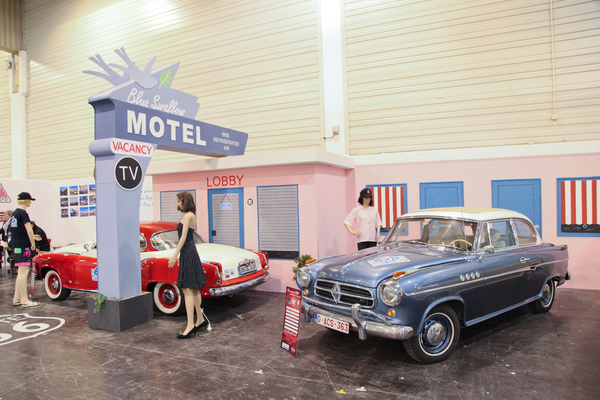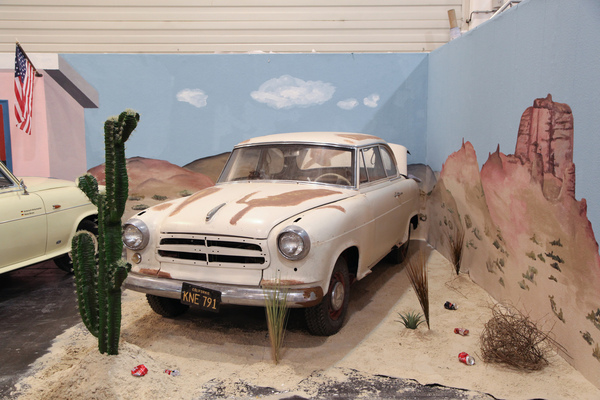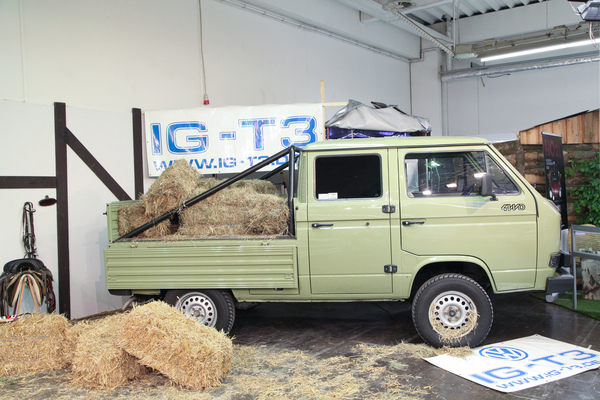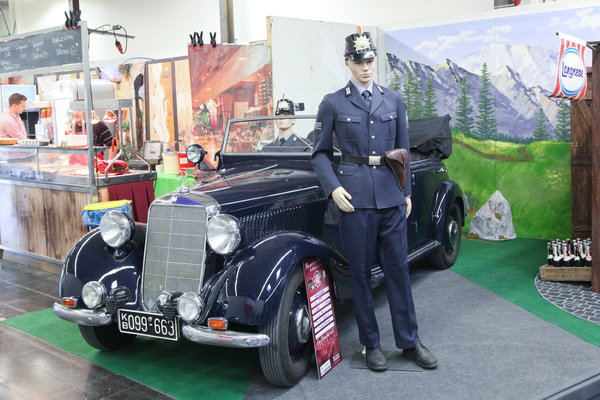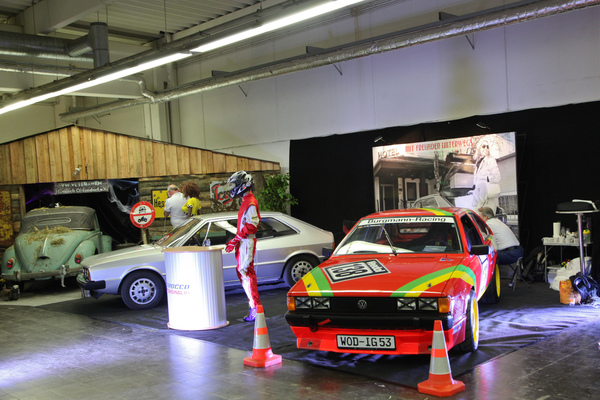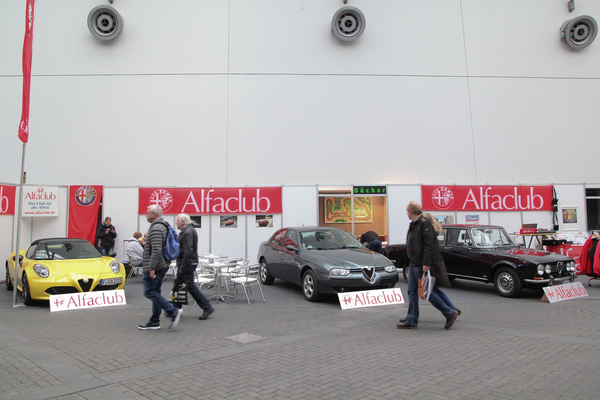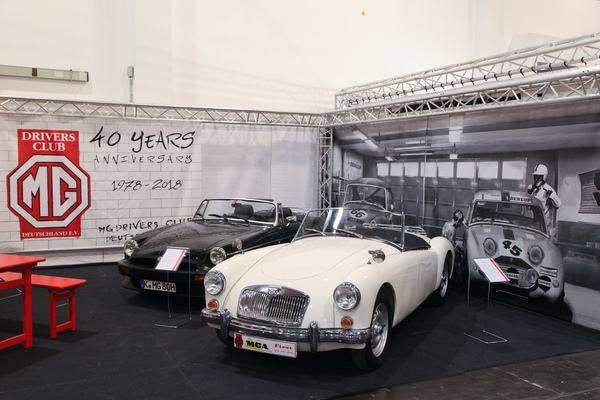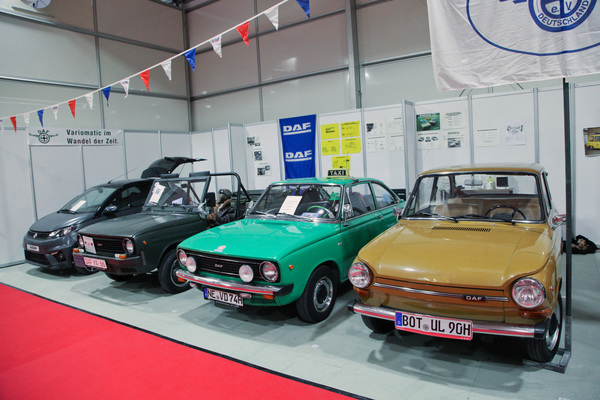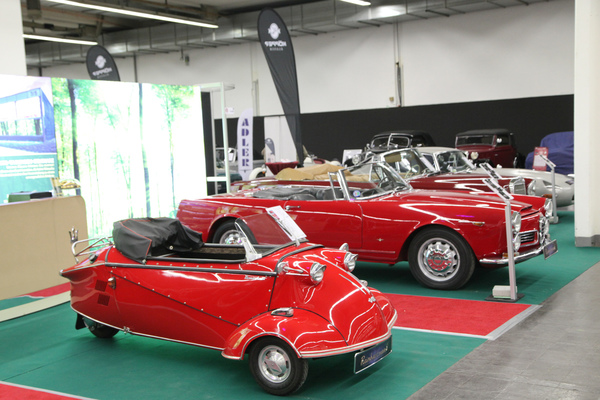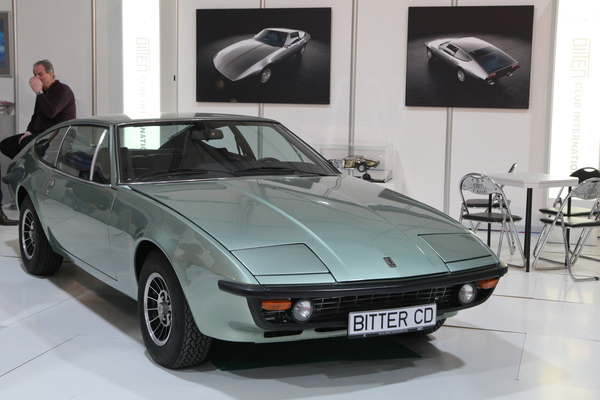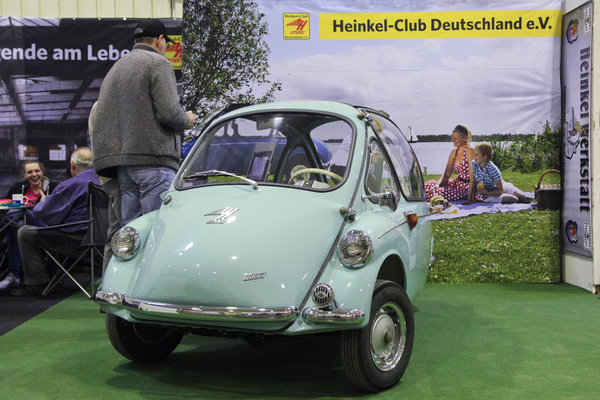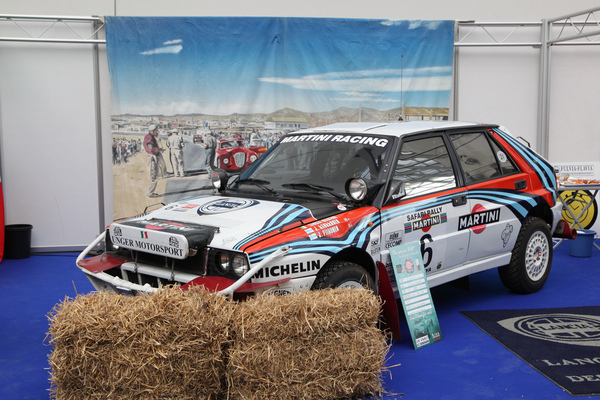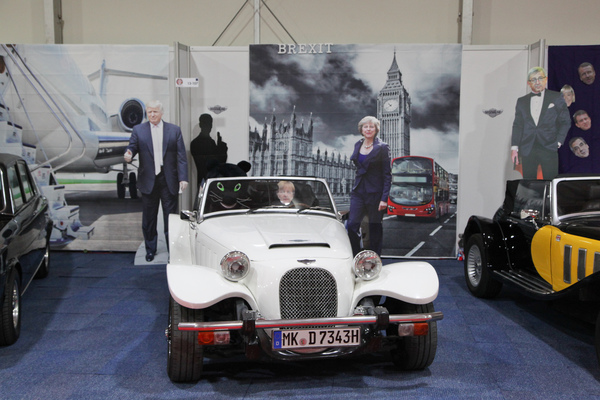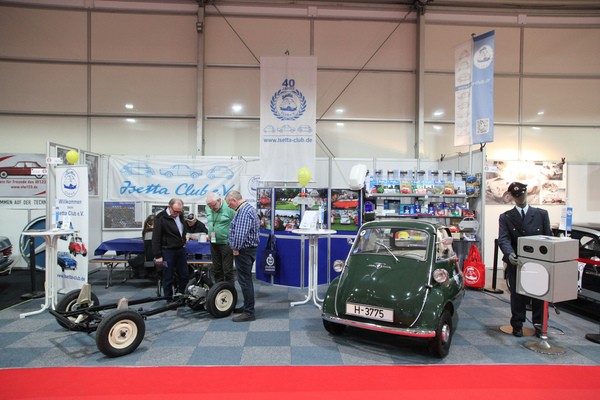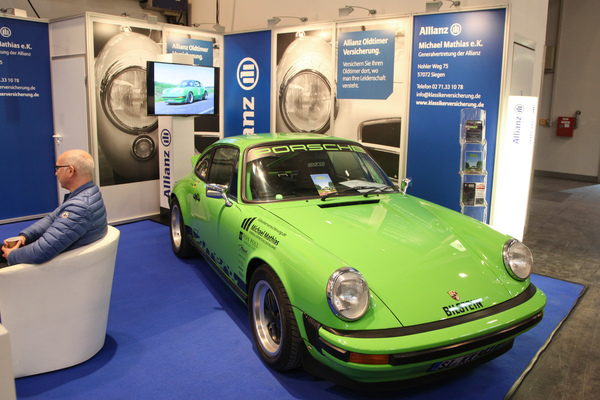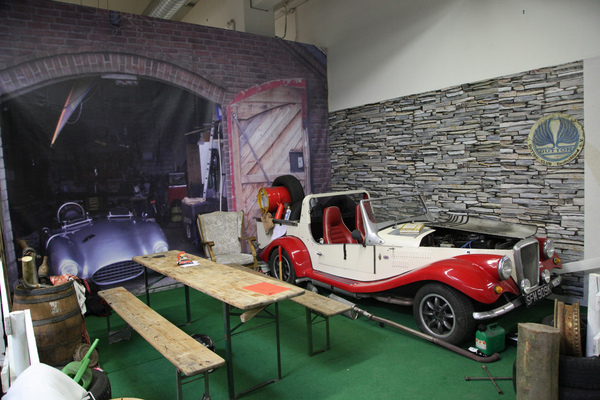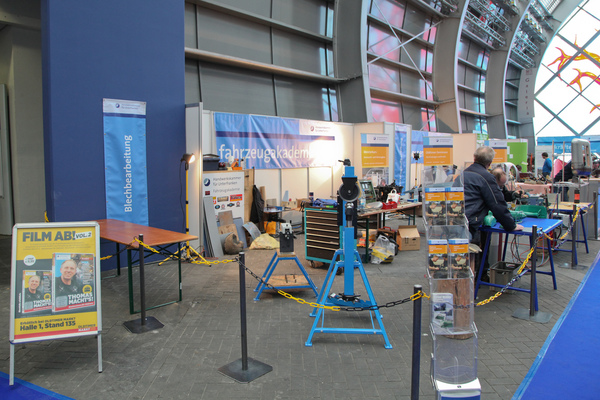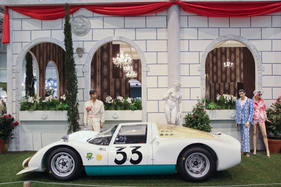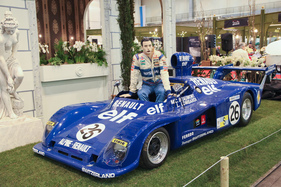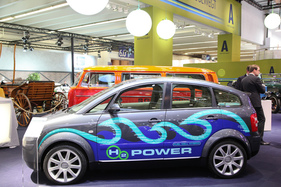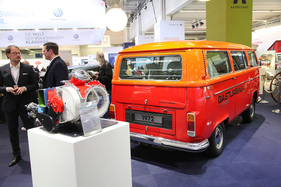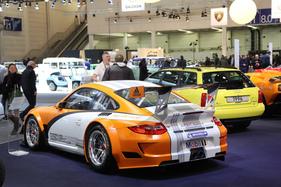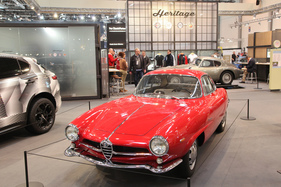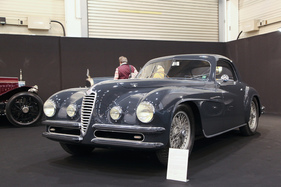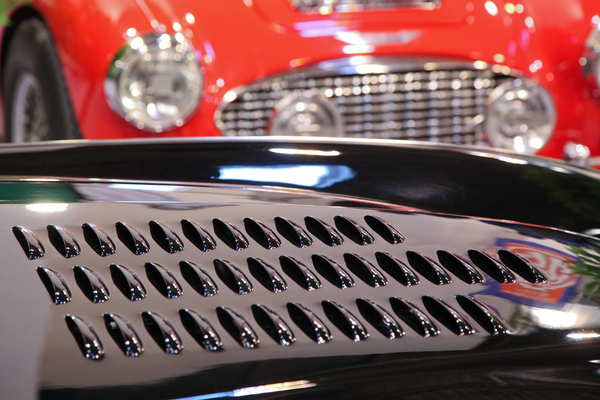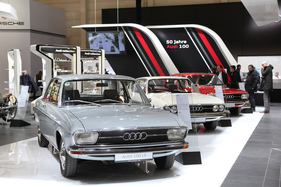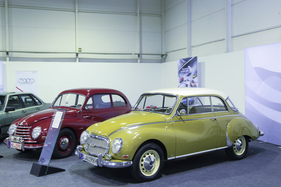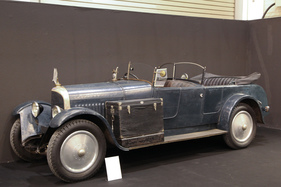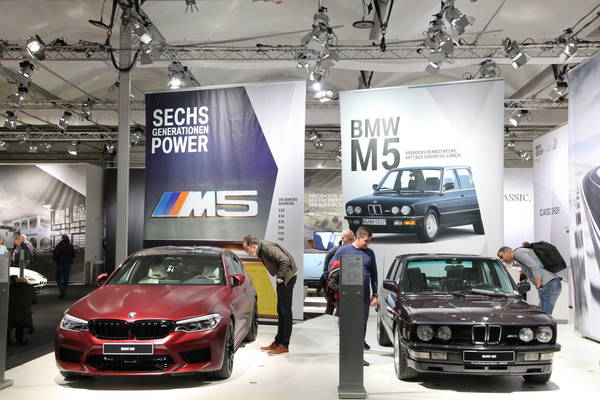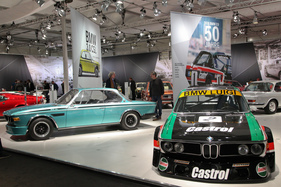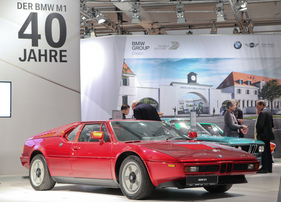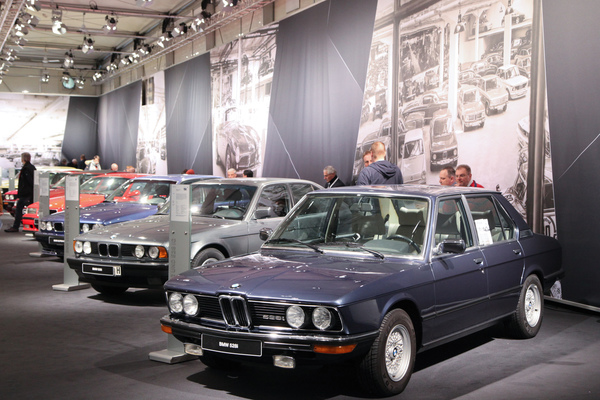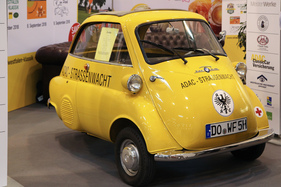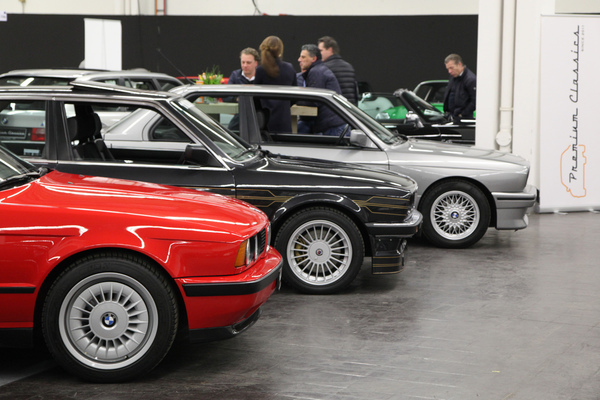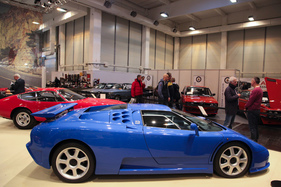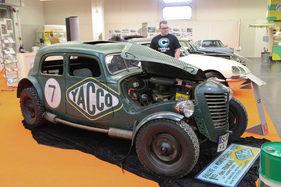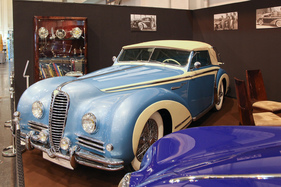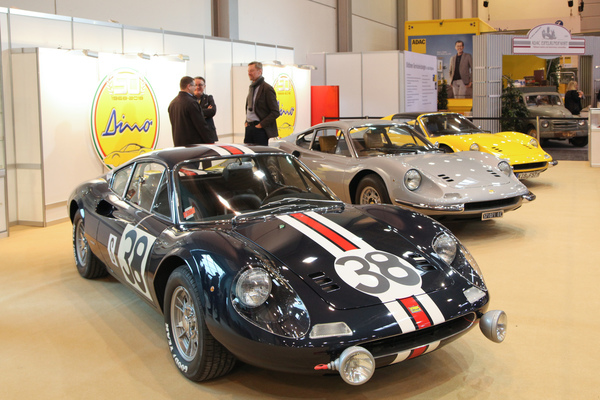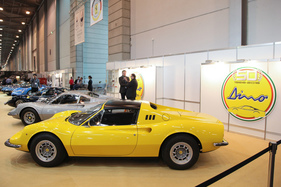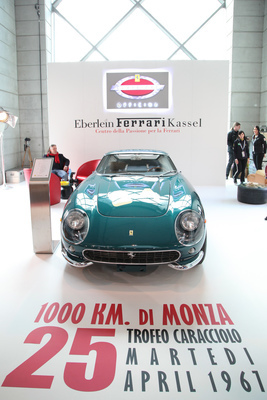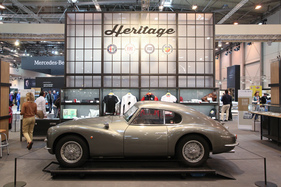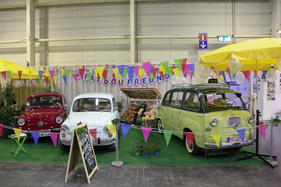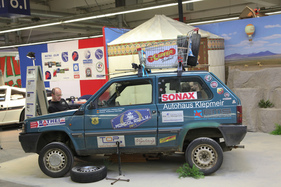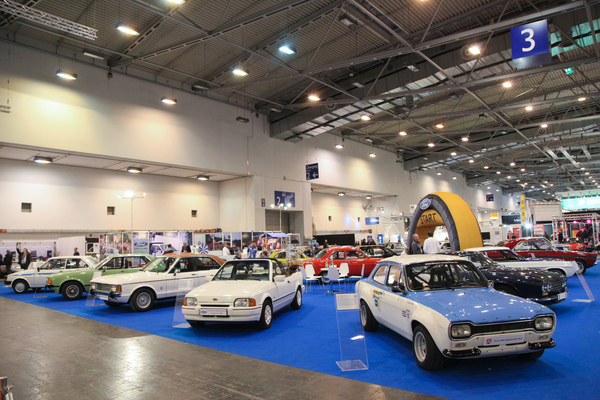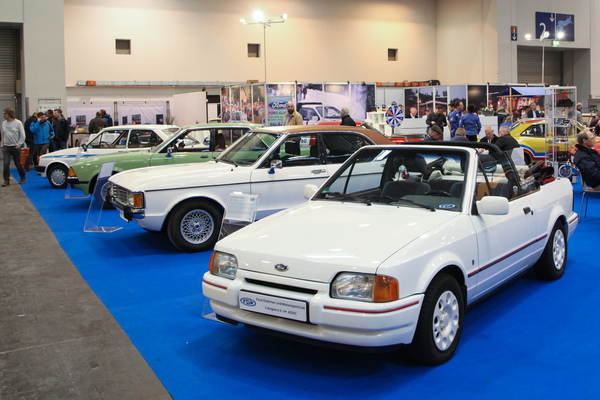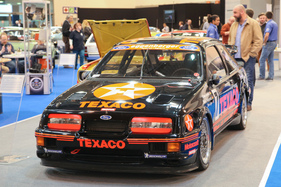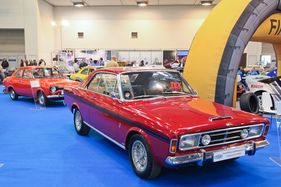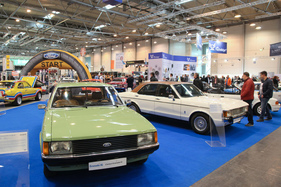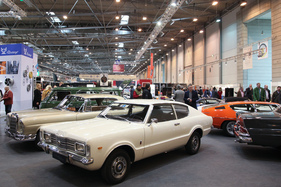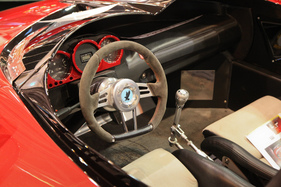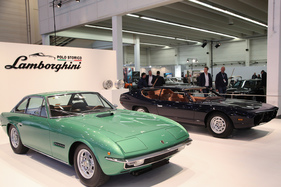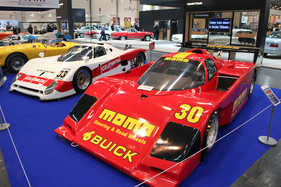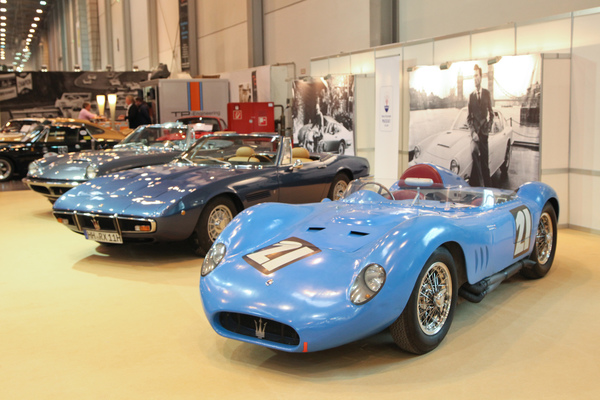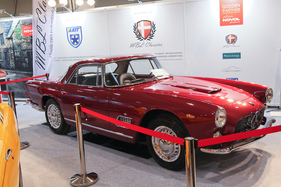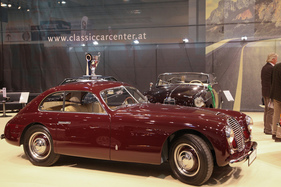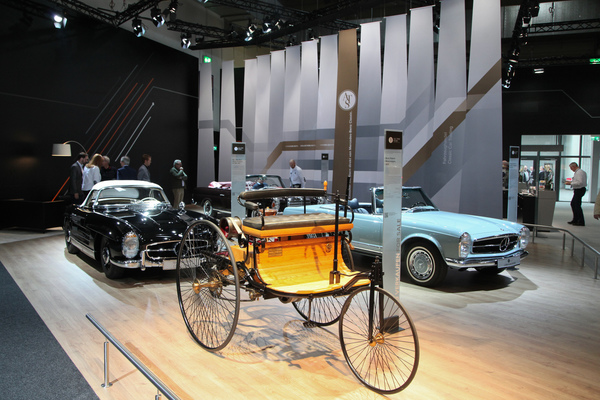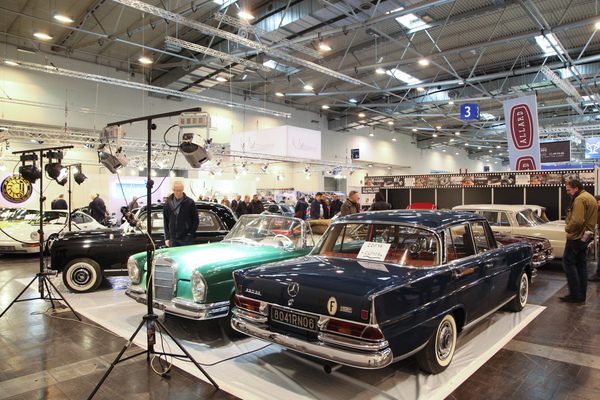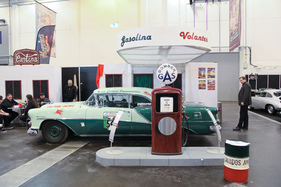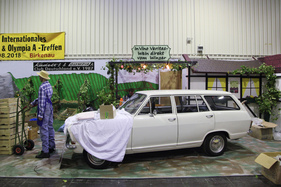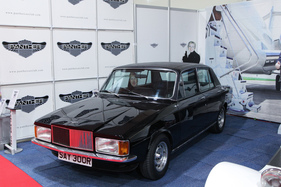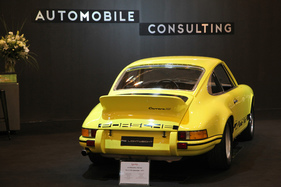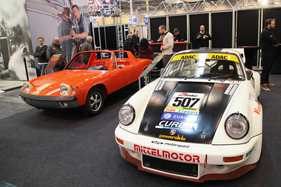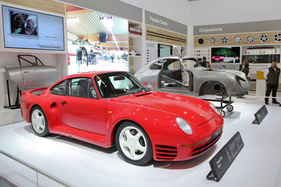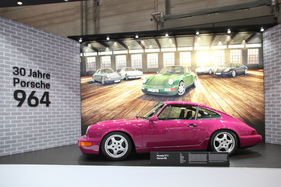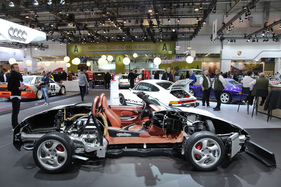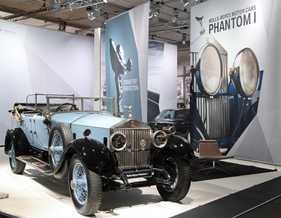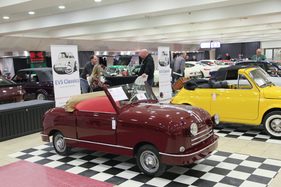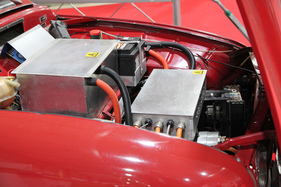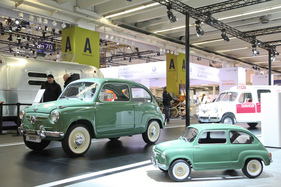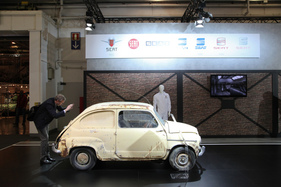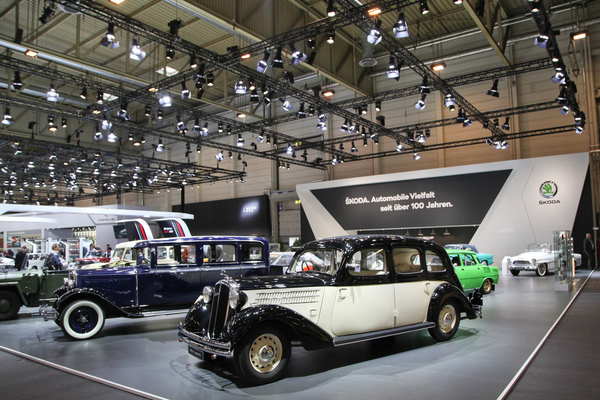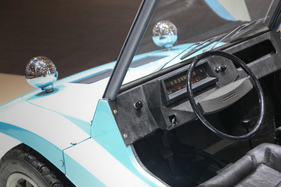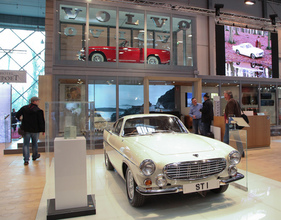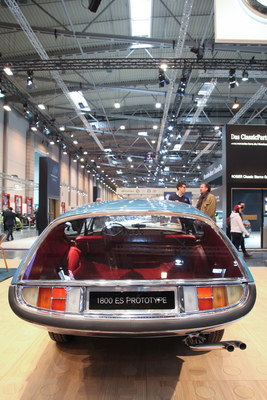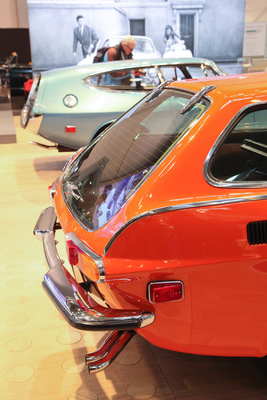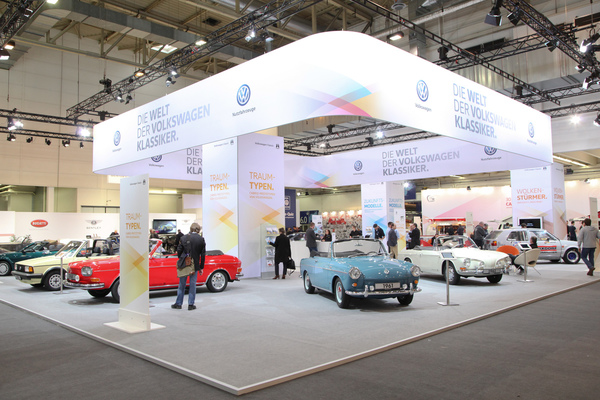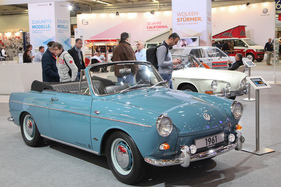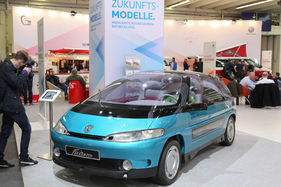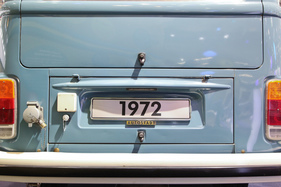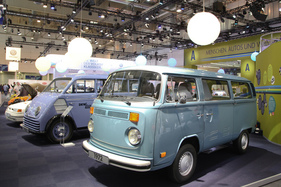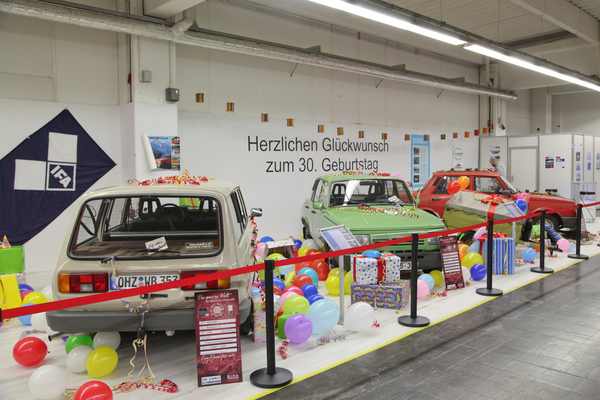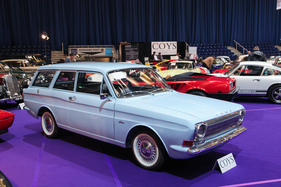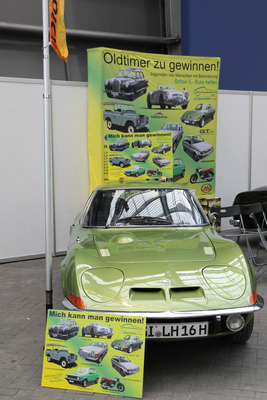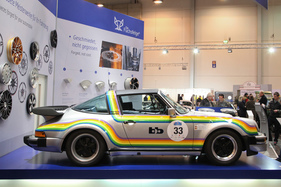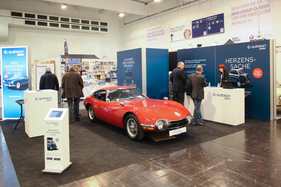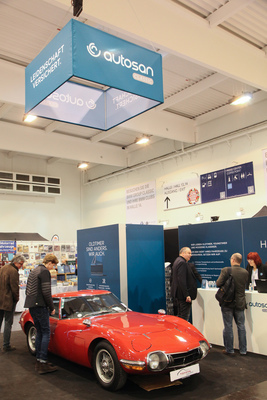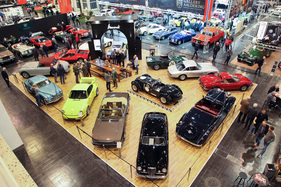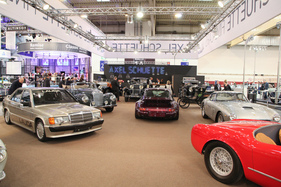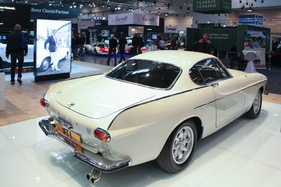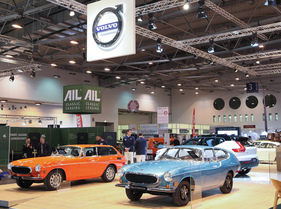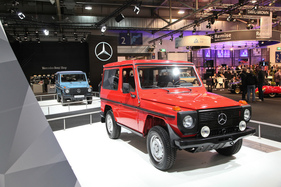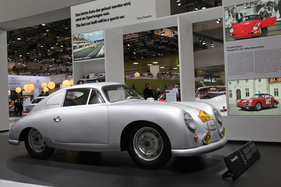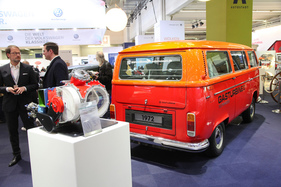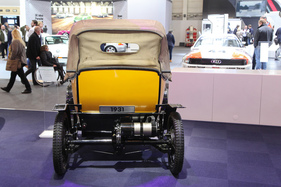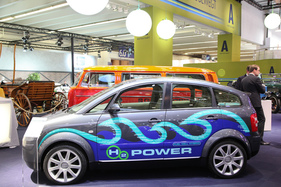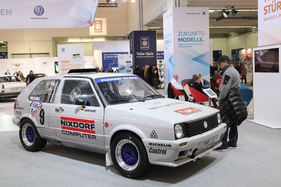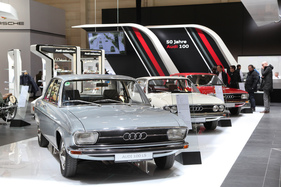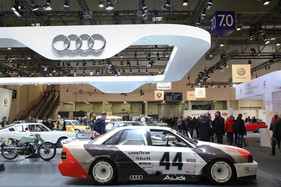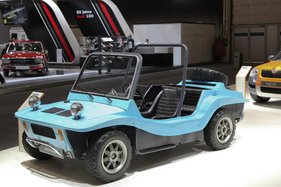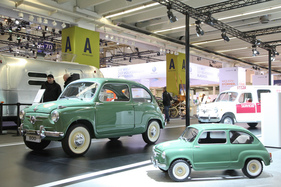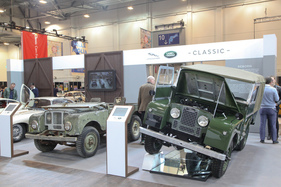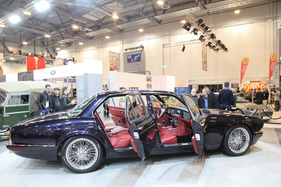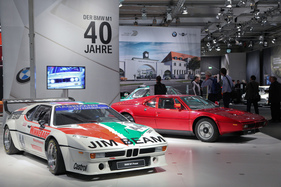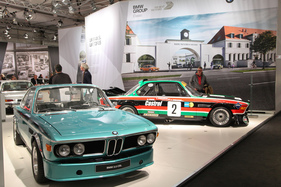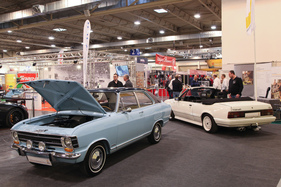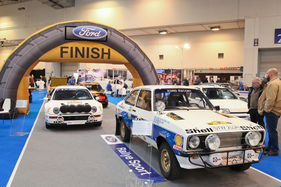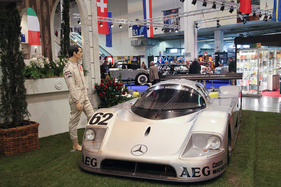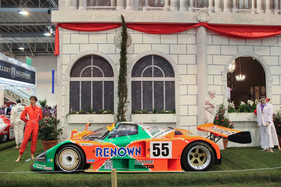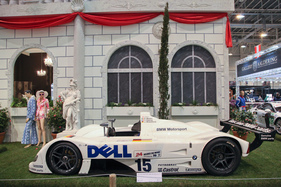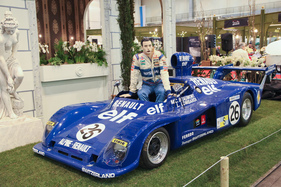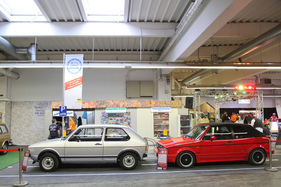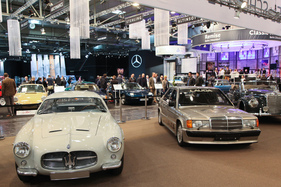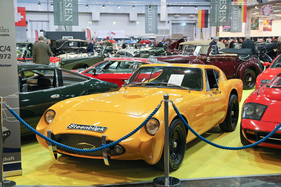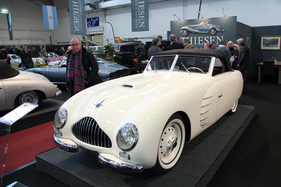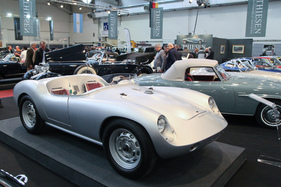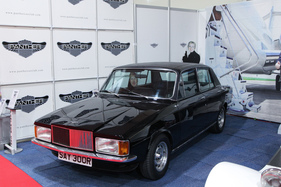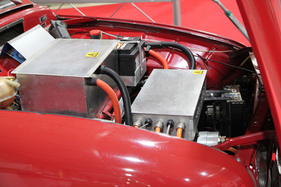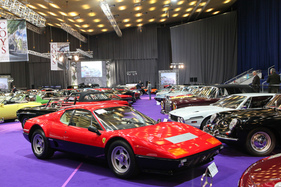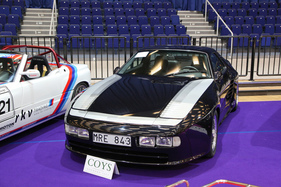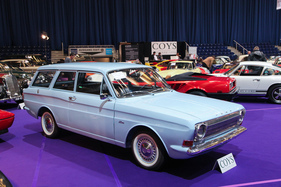A red cake was cut at the press conference on Wednesday at the opening of the trade fair, the Techno Classica took place for the 30th time.
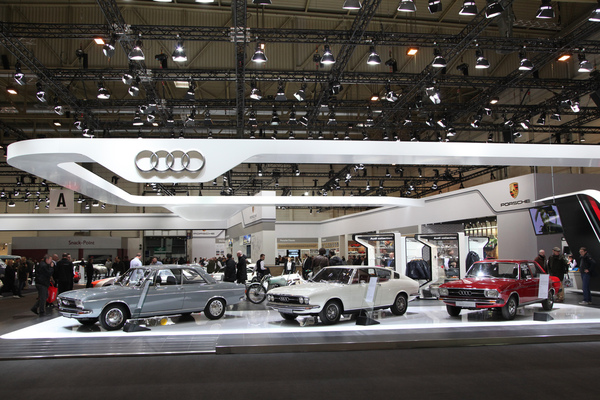
In March 1989, the Eck and Franssen families started their classic car show, which was modeled on the Rétromobile in Paris, as it was candidly commented. Since then, however, the French model has been overtaken, as the Techno Classica is now the most visited classic car show in the world.
In fact, 188,000 visitors were counted at the 30th edition, which was open to the public from March 22 to 25, 2018. This represents an increase of 5,000 visitors compared to the previous year, when the aim was to exceed 200,000, which is particularly surprising given that Retro Classics was also taking place in Stuttgart at the same time. However, with a catchment area of around 10 million people and its international reputation, the Essen trade fair certainly had a good chance.
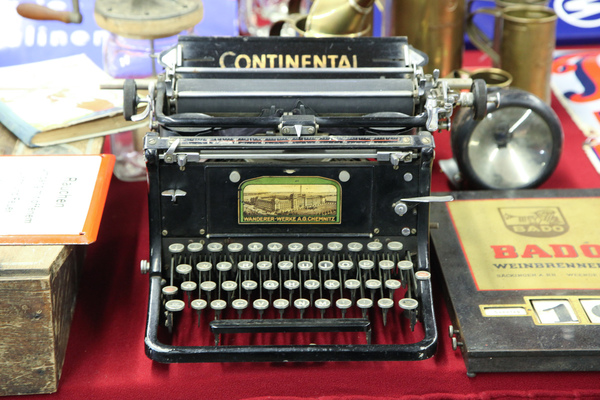
A classic car fair is like a book, each new edition has to be completely revised, explained Eduard Michel Franssen and listed the key figures: 20 brand presentations, 1250 exhibitors, 220 clubs and interest groups, 2700 cars for sale.
Stephan P. Eck added that more than 15 million Germans are now interested in old cars and that the industry has a turnover of EUR 6 billion. The number of H license plates grew by 12 percent from 2017 to 2018. Good times for trade fair organizers too!
Simon Templar's Volvo
Between 1962 and 1967, the television series "The Saint" was broadcast in the UK. At the time, the leading actor was the still relatively unknown Roger Moore, who played Simon Templar and carried out difficult espionage missions.
Surprisingly, he was given a Volvo P 1800 as his company car. Volvo was able to rescue one of these film cars and show it with the "correct" license plate "ST1" in Essen.
It was joined by other P1800 variations, such as a convertible in a glass box that was never produced in series and the prototype "The Rocket" from 1968, an alternative to the P 1800 ES Snow White Coffin, which was also on display.
Off-road vehicle with a star
Mercedes-Benz was reminded of the recently discontinued Mercedes-Benz G model, which, as is well known, was developed together with Steyr-Puch. There was a special test track designed so that only the G-Model could cope with it, while competitor products got stuck.
Maximum off-road capability was the priority during development, elegant shapes were secondary. And so it remained until the end of production in 2017, most of which took place in Graz. Several variants of the model series could be admired at the Mercedes stand.

Of course, Daimler-Benz didn't want to leave it at just SUVs, which is why there were also three Silver Arrows to admire.
70 years of Porsche sports cars
Porsche naturally celebrated 70 years of sports car construction, which officially began with the 356 in 1948. In addition to the original model, a 964 celebrating its 30th birthday and a restored 959 were also on display.
The cutaway model of the Porsche Boxster was certainly also of interest to technology enthusiasts.
Variety of drive systems
The Autostadt, as always represented with a large stand, took up a current hot topic, namely drive concepts. In fact, (almost) all technologies could be demonstrated with vehicles from the brand's own arsenal.
There was a VW bus with a gas turbine, a Bugatti with an electric motor, an Audi station wagon with hybrid technology and, of course, a Golf with a diesel engine.
The Group has no shortage of petrol engines anyway, but for a steam car it had to resort to a third-party brand, namely Stanley.
As a bonus, there was also an Audi A2 with a fuel cell drive.
Unique convertible pleasures
It was more about pleasure than technology at Volkswagen, where they had put together an interesting group of VW convertibles that were only in the prototype stage. Some of these cars - VW Corrado, VW Jetta, VW 411, VW 1500 or Karmann-Ghia Type 34 - would certainly have had a chance with the buying public.

And because they want to drive up Pikes Peak again soon, they also put the twin-engined Golf II on the stand, which they started with around 30 years ago.
The VW factory show was complemented by two interesting prototypes, the VW Futura from 1989 and the ESVW 1 safety car.
50 years of the Audi 100
At Audi, the now fifty-year-old Audi 100 was the center of interest. If this model had not been launched at the time - against the interests of the Group, not least - the history of Audi would almost certainly have taken a different course.
The Audi 100 and Audi Coupé were of course joined by other cars from the brand's history, such as an Auto Union Type D with 12 cylinders, the Audi 200 quattro TransAm, which stirred up the American championship in 1988, and the "singing saw" DKW 350 RM, a motorcycle from 1954.
Automotive diversity
At Skoda, the motto was "Automobile diversity - for over 100 years" and, in addition to a number of pre-war models, a Skoda Buggy from 1975, built on the shortened chassis of the 100/110 L, a Trekka, which was built 3000 times between 1966 and 1972 on the basis of the Octavia, a Skoda Favorit 136 L/H "Rundstrecke" and a Skoda 120 S Rallye were on display.
Seat, meanwhile, commemorated the Seat 600, which was presented in various scales and states.
Creative urge at Jaguar
Jaguar is still very busy. They have just sold part of their huge collection of classic cars and announced the production of new Jaguar D-Types. Production of rebuilt Series 1 Land Rovers, Jaguar E-Types and Range Rovers is also continuing.
And for special customers, a Jaguar XJ from 1984 is also being transformed into a one-off. The customer in question is Iron Maiden drummer Nicko McBrain.
His Jaguar was upgraded with over 2000 non-original parts and equipped with an 1100-watt stereo system, among other things. Fans of originality would certainly have their hair standing on end in front of this car.
Three anniversaries at BMW
Several anniversaries were celebrated at the BMW stand, which was again positioned at the very end of the makeshift Hall 14.
The BMW M1 celebrated its 40th birthday with a road-going and a racing model, while civilian and racing E9 coupés celebrated the 50th birthday of the elegant BMW two-door.
The large saloons of the E3 series also looked back on 50 years. And, of course, BMW and the clubs presented an overview of the brand's long history and the manufacturers Mini and Rolls-Royce, which have since been added.
Right at the entrance to the stand, there was also a reunion with the first BMW M5, which stood right next to the current model.
Where has Opel gone?
Those who walked into Hall 2 as usual to admire the spacious Opel stand, which had always attracted a lot of attention in previous years, were amazed. In fact, the stand area had been reduced to a fraction of what it had been in previous years and there were three cars from the Old Opel Association in front of the factory exhibits.
The plant had to reorganize itself for the first time, said the people on the stand, referring to the recent takeover by Peugeot. Nevertheless, it is a shame that old traditions are simply being abandoned, because brand care should still be important.
Other manufacturers also had relatively small stands, such as Lamborghini, where an Islero and an Espada, both celebrating their 50th birthday, were on display. The Fiat-Chrysler Group presented a beautiful Rappi-Fiat 8V, among other things. Seat dedicated the stand to the Seat 600.
Rarities from Ford
Ford was once again represented in a very diverse way, because in addition to the 50th anniversaries of the Ford Escort and Ford RS models, there was also a unique Ford RS 200 in Group S design on display.
As always, the Ford waffles and of course the various exhibits from the long history of Ford Cologne and Ford Worldwide provided a lot of fun.
The heroes of Le Mans
Every year, the SIHA special show in the Grand Palais in Hall 6 is awaited with great interest. In 2018, they looked back on Le Mans heroes and presented, among other things, a Sauber-Mercedes, at the wheel of which Jochen MAss/Manuel Reuter/Stanley Dickens won the 24 Hours.
A Mazda 787B was the only Wankel sports car to win at the Sarthe in 1991.
A Rondeau M378 recalled the year 1978, when a car won whose name described both the car and the driver.
The BMW V12 LMR won Le Mans in 1999 with 580 hp and a weight of 600 kg.
In 1975, two women - Nella Lombardi and Marie-Claude Beaumont - competed in an Alpine-Renault A441 at Le Mans and even had a chance of winning the overall race. But the Swiss driver Beamont stepped on the gas too much and broke down after 20 laps with no fuel after the Mulsanne. Because the rule stated that you had to drive at least 20 laps on one tank of fuel, the race was lost. Nevertheless, two women won the two-liter class. Nobody knew their names at the time, although Michèle Mouton later almost became world rally champion in an Audi. At Le Mans, she drove a Moynet together with Christine Dacremont and Marianne Hoepfner.
Clubs with a creative boost
While the manufacturers score points above all with interesting and special vehicles and their perfect lighting (and lettering), the clubs manage to attract attention every year with colorful, entertaining and educational stands.
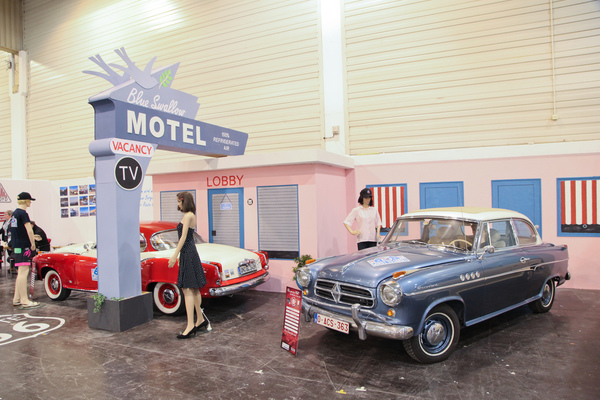
2018 was no exception, on the contrary. At one location, for example, you could view a very special Mercedes-Benz nail study, while an Opel Kadett Caravan was parked next to a vineyard ("in vino veritas - wine straight from the vintner") and the Wartburg friends colorfully celebrated their 30th birthday.
Two VW Golfs were parked in a village shopping street, two VW Polos, both in yellow, in front of a post office. The Dr. Oetker VW bus was parked in front of the appropriate local backdrop, while the Fiat 600 friends made a party of flags.
And that's not even a third of the interesting club stands.
Younger and younger cars?
It was already pointed out at the press conference that the boundary between classic and new cars is becoming increasingly blurred. In fact, the last Land Rovers produced, for example, as well as the Mercedes G models, actually became direct classics, and this trend is just as true for the hot-blooded cars from Ferrari and Lamborghini, as well as Porsche.
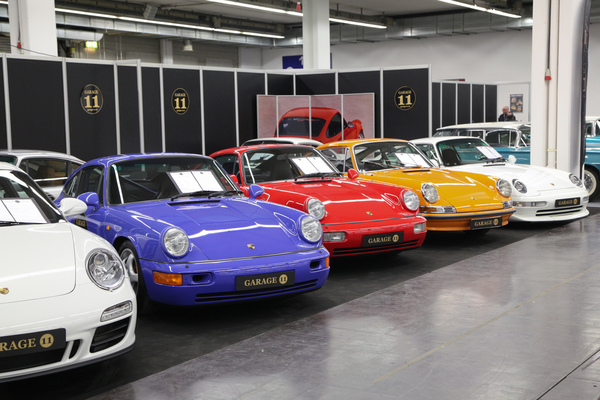
As a result, many relatively young cars could be seen in Essen, while the really old, i.e. pre-war cars, are increasingly being pushed to the sidelines.
Magnificent stands of the big dealers
The trend towards newer and newer cars could even be observed at the premium dealers, who of course once again carted a lot of expensive cultural assets to Essen.
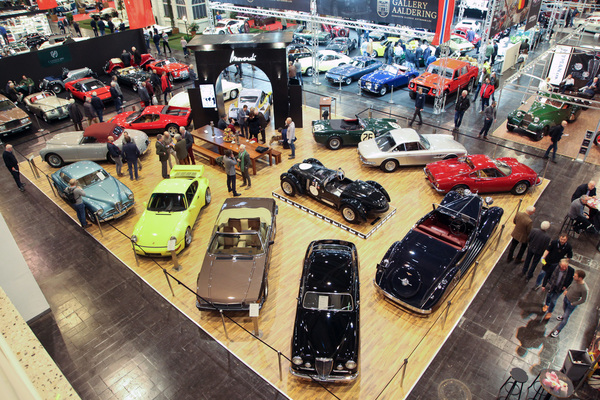
Whether Alfa Romeo 6C 2500, Porsche 911 Carrera RS, Jaguar E-Types, Dino 246 GT or Jaguar XK 120, the selection was enormous, and walking through the halls was exhausting for visitors eager to buy, because there were so many interesting cars to explore in sometimes very little space.
Every year, cars are also honored in Essen; this year, the Maserati A6 G 2000 Zagato from 1956 received the "best of show" trophy at the Axel Schütte stand.
The exotics among the exotics
In addition to the super classics, which were of course prominently represented in Essen, there were also plenty of super exotics to discover. At Steenbuck, for example, there was a bizarre Banjo GT from 1970, equipped with a V8 engine with a displacement of 4660 cm3.
Only 10 to 15 of these kit cars were built at the end of the 1960s, and only one is said to be in Europe. The price tag was EUR 69,900.
Thiesen came across one of seven Veritas C90 Scorpions built in 1950, once owned by German Formula 3 champion Hellmut Deutz.
Plastic enthusiasts were sure to enjoy the 1957 Porsche Devin D Spyder, which, with 130 hp and many expensive Porsche parts, certainly provides a lot of driving pleasure thanks to its weight of only 535 kg.
The Alfa Romeo 1000 Abarth from 1958, fitted with a Colani body, has been seen before but is always admired. However, those who like Colani could also get their hands on a cheaper version, namely in the form of a VW kit, which was also available in Essen as a finished car.
The Panther Rio, built between 1975 and 1977, was certainly also exotic, based on the Triumph Dolomite, whose body was removed and replaced with an aluminum skin that was probably intended to resemble a mini Rolls-Royce. The resulting car cost more than a Jaguar XJ12 or a Mercedes-Benz 350 SE and was only sold around 36 times. Most visitors to Essen probably saw it for the first (and perhaps last) time. It was not for sale.
As is well known, Saab no longer exists, so no new Saab electric cars are appearing. However, there was an old Saab 95 to admire at the Techno Classica, which was converted to electric drive in 2012. The engine produces around 60 hp, the range is said to be 120 kilometers and the top speed 130 km/h.
Even more auctions
On Saturday, Coys will be holding its well-established auction.
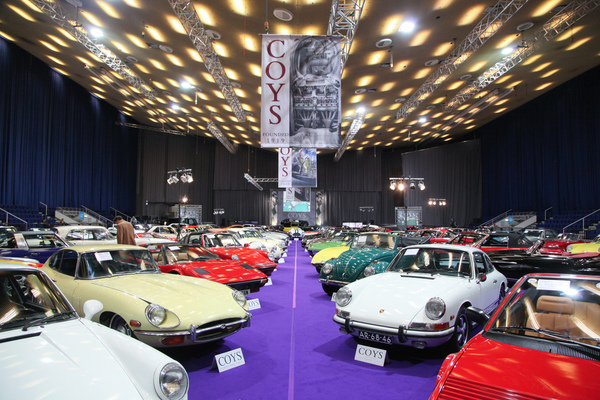
Around 80 percent of the more than one hundred cars were sold. A Ferrari 512 BBi from 1983 was worth EUR 253,250 to the buyer.
A 1993 BMW 850 CSI found a new owner for EUR 64,250, while a 1987 M3 found a new garage for EUR 46,000.
A 1966 Peugeot 404 with fuel injection cost EUR 5750 and a 1963 Maserati Sebring Series 1 EUR 215,000. The SV-specification Lamborghini Miura P400 was expensive, selling for EUR 1.43 million.
However, no one was willing to pay more than EUR 165,000 for the 1992 Porsche 964 RS. And the Porsche 928 DP, which certainly took some getting used to in terms of looks, was also not knocked down (highest bid EUR 24,000).
The Ford Taunus 12M Turnier from 1969 found a new owner; EUR 11,500 had to be paid for the smart estate car.
Two auctions have already been announced for next year; RM/Sotheby's also intends to take part in Essen and offer around 150 cars. It will be interesting to see.
Market calming down?
The fact that the market has calmed down and reasonable prices are now being called out again could not be observed everywhere. Some sellers still seem to be in a very optimistic mood. There is no definitive answer as to whether the calculation worked out in Essen. Some cars were already displaying "sold" signs on the opening day, but it was not clear whether this was a tactic or actual success.
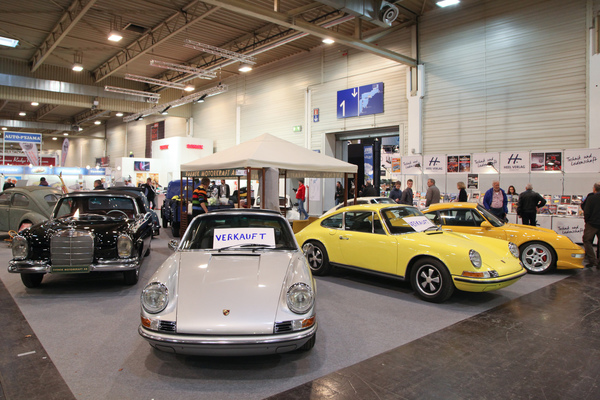
Little of the words heard at the press conference, such as "prices are no longer sky-high", could be felt in the halls. But perhaps the dealers and suppliers finally understood the hint from Stephan Eck, who said at the opening that people were back on the ball who not only wanted to have old cars, but wanted to love them.
Incidentally, the next Techno Classica will take place a little later in 2019 and separately from Retro Classics on April 10-14.
If you would like to enjoy a humorous review of all three trade fairs taking place on the same weekend, please refer to the picture story .

